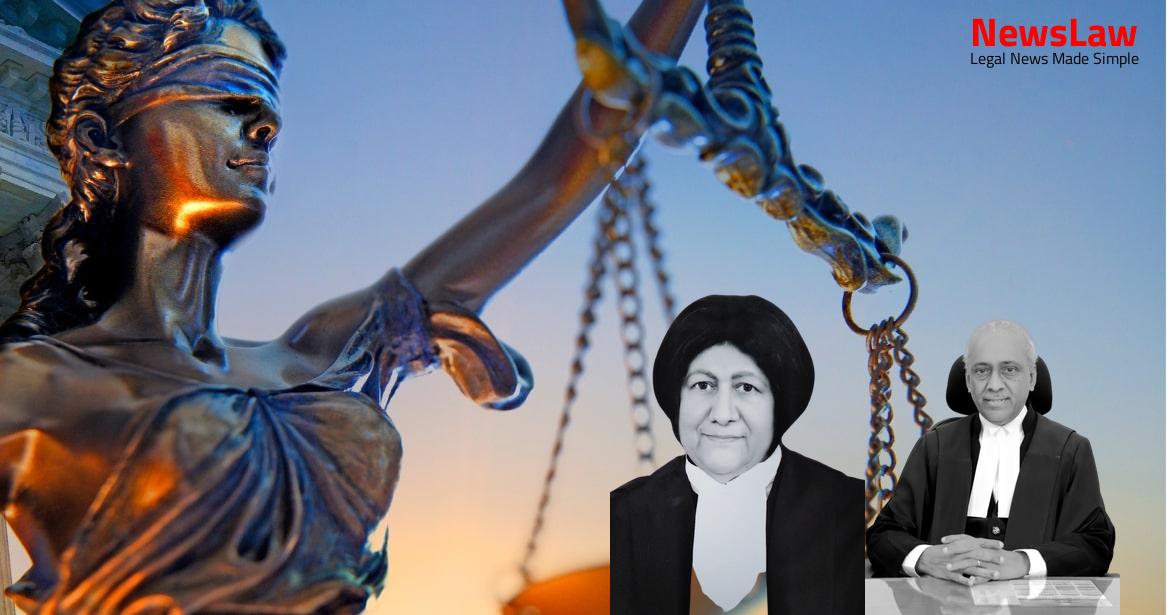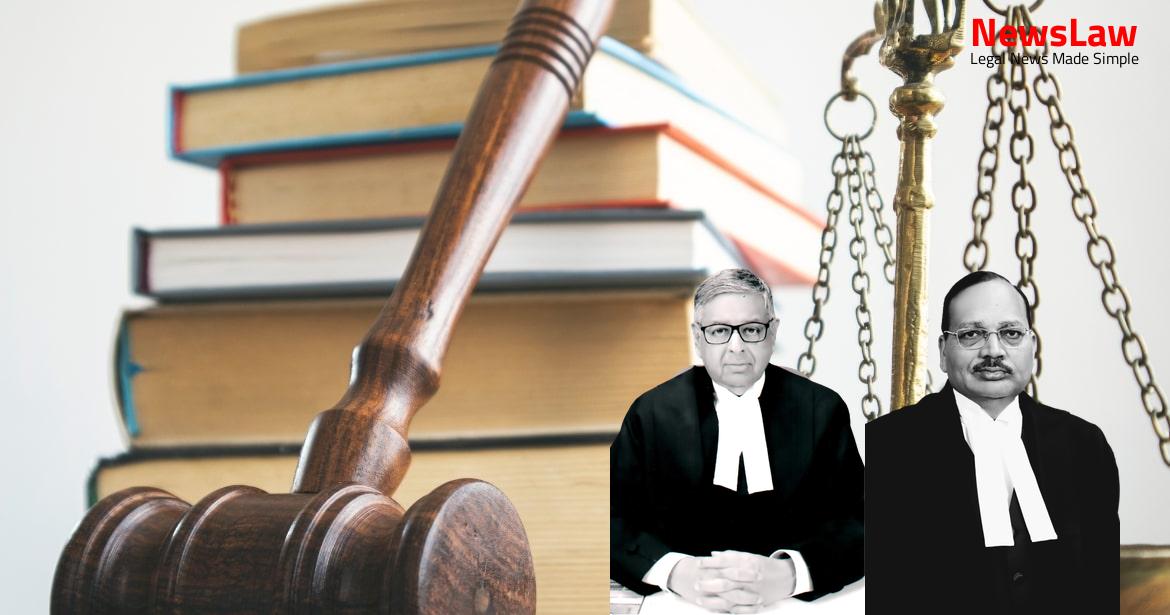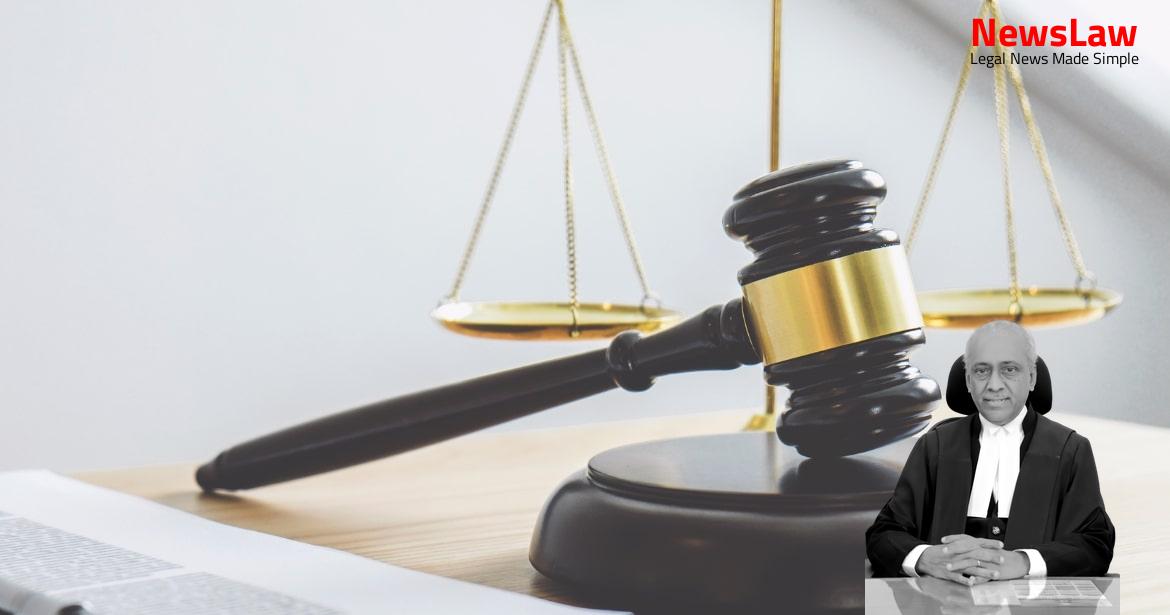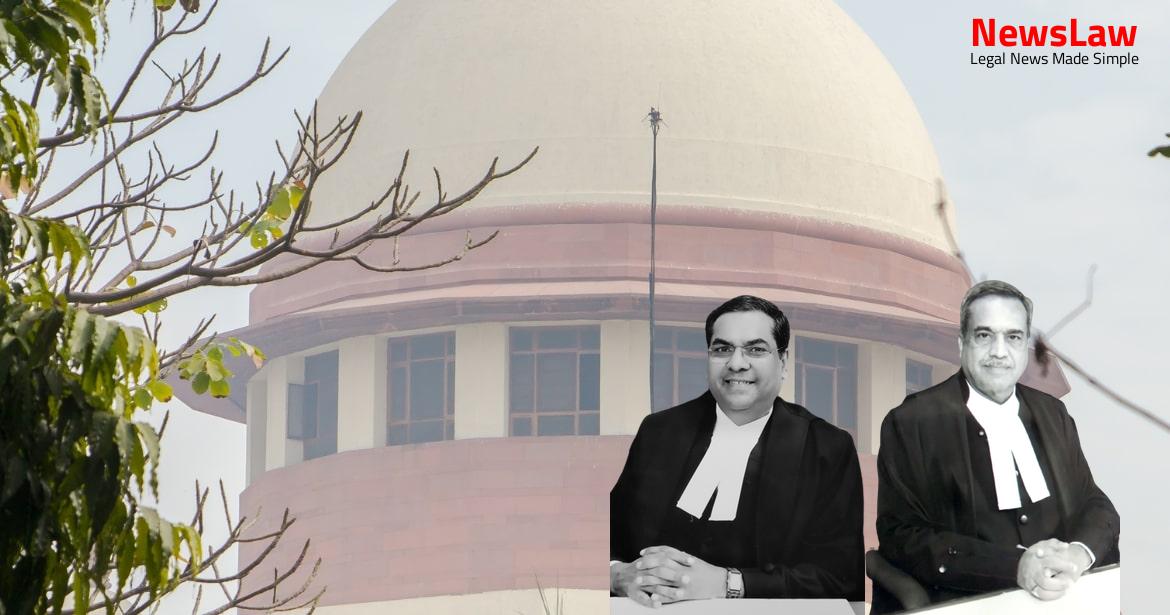Delve into the detailed legal analysis conducted by the courts in a significant murder case. This summary highlights the critical examination of witness testimonies, evidence inconsistencies, and the application of legal principles that influenced the final verdict. Understanding how courts navigate complexities in criminal jurisprudence sheds light on the nuances of the legal system.
Facts
- The Sessions Court acquitted all the 22 accused except those against whom the charges abated.
- The High Court confirmed the acquittal of all the accused except A-1 and A-2.
- State filed two appeals – one against 17 accused and the other against 2 accused.
- High Court dismissed the State’s appeal against A-7 and A-8, confirming their acquittal.
- A-1 and A-2 were convicted only for the offences under Section 302 IPC.
- Criminal Appeal No.1591 of 2001 was against the acquittal of A-7 and A-8, while Criminal Appeal No.1590 of 2001 was against the acquittal of several other accused.
- Appellants A-1 and A-2 were convicted for an offence under Section 302 IPC by the High Court of Karnataka.
- The complaint filed by mother of the deceased led to the registration of FIR Exhibit P-8.
- A second FIR was registered for more offences, including those under the Scheduled Castes and Scheduled Tribes (Prevention of Atrocities) Act, 1989.
- Nagamma, cited as a witness, was not examined for unknown reasons.
- The father and sister of the deceased were not treated as eye-witnesses as they did not witness the incident.
- The accused, mistaking the victim’s abuse towards his own father, picked a quarrel leading to the murder.
- The motive for the murder, as per prosecution, was due to A-1 hearing the deceased using foul language.
- PW-1 and PW-4, the mother and maternal uncle of the deceased respectively, provided ocular testimony for the case.
- PW-10, the doctor who conducted the post-mortem, played a crucial role in the prosecution’s case.
- 22 accused were alleged to have formed an unlawful assembly, entering the deceased’s house and committing murder with deadly weapons.
- PW-9, the mahazar witness, turned hostile during the proceedings.
- A complaint by the deceased’s wife, Nagamma, was also lodged as Exhibit P-9.
Also Read: Interpretation of Corporate Guarantor under IBC
Analysis
- The evidence of PW1 is deemed to be full of exaggeration and hence not acceptable.
- PW1 stated in his evidence that accused-2 brought MO9 axe and assaulted him.
- PW-13, the Sub-Inspector of Police, received the oral complaint of PW-1 at 00:45 hrs on 01.12.1997 and registered it as Crime No.182/1997.
- The Trial Court noted the absence of evidence regarding the injuries suffered by PW-1.
- The High Court’s reasoning for overturning the verdict of acquittal by the Sessions Court seemed insufficient.
- The presence of false implication was indicated by discrepancies in the weapons stated by PW1 compared to those in the complaint.
- The charges against all accused, except A-1 and A-2, were held not proved, and only the offense under Section 302 IPC was upheld for A-1 and A-2.
- PW-13 entrusted the further investigation of the second FIR to the CPI due to the seriousness of the offenses.
- The contradictions in witness testimonies regarding the accused persons’ presence raised doubts on the credibility of the witnesses.
- The High Court’s reliance on the consistency in evidence of PW-1 and PW-4 for convicting A-1 and A-2 under Section 302 IPC was criticized for ignoring conflicting details.
- Glaring contradictions between PW1 and PW4’s testimonies on weapon types and accused roles undermined the prosecution’s case integrity.
- The High Court’s recording of Nagamma’s unavailability for examination and the existence of two FIRs raised doubts on the prosecution’s case.
- The principle ‘sifting the chaff from the grain’ was suggested to be applied to separate truth from exaggeration in the evidence.
- The lack of corroboration with medical evidence further cast doubt on the prosecution’s claims.
- The Trial Court’s disbelief in PW-1 and PW-4’s evidence was attributed to the inconsistencies and exaggerations noted.
- The principle that when a witness deposes falsehood, the evidence may not need to be entirely eschewed in criminal jurisprudence.
- Recent case law, Ravi Sharma vs State, highlighted the applicable principles.
- The High Court’s judgement in the present case is not in line with the legal principles.
- The conviction of the appellants by the High Court cannot be upheld.
- In cases where evidence is inseparable, attempts to separate it may render it unacceptable, leading to avoidance.
- The principle of eschewing evidence due to falsehood is more of a rule of caution than a strict law.
Also Read: Quashing of FIR and Charge-sheet: Legal Analysis
Decision
- The appeal is allowed.
- The impugned judgment of the High Court regarding the conviction of the appellants is set aside.
- The appellants are to be released immediately, unless they are held in custody for another case.
- No costs are to be incurred.
Also Read: Judicial Promotion Dispute Resolved
Case Title: RAMABORA@RAMABORAIAH Vs. STATE OF KARNATAKA (2022 INSC 809)
Case Number: Crl.A. No.-001697-001697 / 2011



